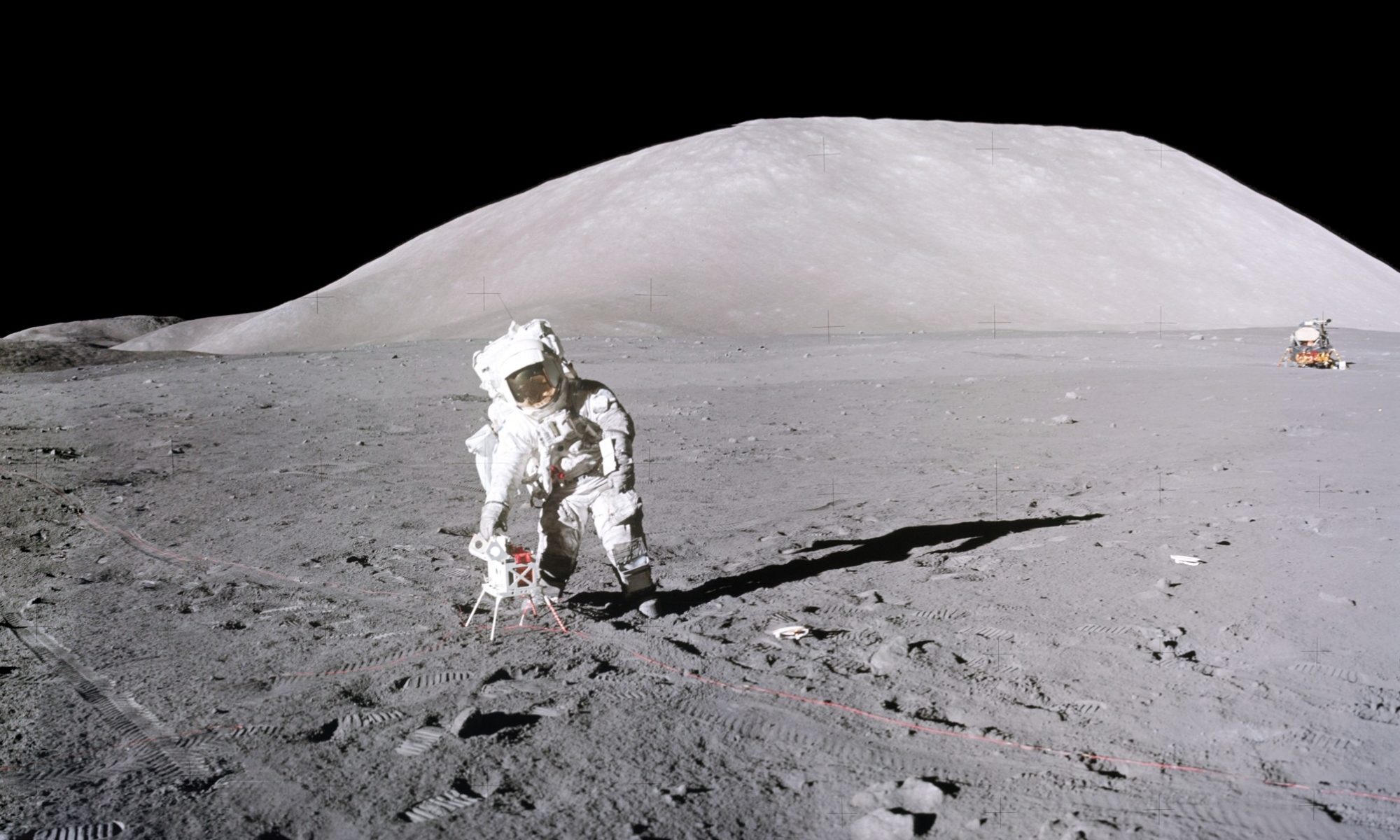Brig. Gen. James A. McDivitt June 10, 1929 – Oct. 13, 2022
 The official NASA portrait of Apollo Astronaut Jim McDivitt in his Apollo 9 flight suit. (NASA photo S71-59425)
The official NASA portrait of Apollo Astronaut Jim McDivitt in his Apollo 9 flight suit. (NASA photo S71-59425)
Jim McDivitt, on his first trip into space, commanded the 1965 Gemini IV mission of 62 earth-orbits, during which Edward White performed America’s first spacewalk. At the conclusion of White’s venture outside the space capsule, McDivitt overcame a serious problem with the spacecraft latch mechanism so that White could shut the hatch and the two men could return safely to Earth.
 Ed White (left), Gemini-Titan IV Pilot, and Jim McDivitt (right), Gemini-Titan IV Command Pilot, posing for their Gemini IV mission at Cape Kennedy’s Launch Pad 19 on June 1, 1965. (NASA photo S65-19528).
Ed White (left), Gemini-Titan IV Pilot, and Jim McDivitt (right), Gemini-Titan IV Command Pilot, posing for their Gemini IV mission at Cape Kennedy’s Launch Pad 19 on June 1, 1965. (NASA photo S65-19528).
Selected in 1952 as one of NASA’s illustrious Group 2 astronauts that included spacecraft commanders Frank Borman (Apollo 8), Thomas Stafford (Apollo 10), Neil Armstrong (Apollo 11), and Pete Conrad (Apollo 12), McDivitt set his own path to fame.
Apollo 9, the first of two missions planned to test the operation of the Grumman Lunar Module (LM) in earth-orbit, became Jim’s Apollo mission commander assignment after crews were reshuffled following the tragic 1967 Apollo 1 (204) fire that killed Gus Grissom, Ed White, and Roger Chaffee. With delays in the construction of the Lunar Module, a temporary issue with the Saturn V, and intelligence that the Soviets were up to something, Apollo Spacecraft Program Manager George Low persuaded NASA to fly the North American Command and Service Module (CSM) into lunar orbit (Apollo 8) in order to maintain the operational momentum of the Apollo Program.
 (Left-to-Right) Jim McDivitt, Commander (CDR); Dave Scott, Command Module Pilot (CMP); and Russell Schweikart Lunar Module Pilot (LMP), the crew of Apollo 9 with the Apollo Saturn 8 rocket in the background. (NASA photo S68-56621).
(Left-to-Right) Jim McDivitt, Commander (CDR); Dave Scott, Command Module Pilot (CMP); and Russell Schweikart Lunar Module Pilot (LMP), the crew of Apollo 9 with the Apollo Saturn 8 rocket in the background. (NASA photo S68-56621).
McDivitt was given the choice of flying the Apollo 8 mission to the Moon; however, he declined, as he and his crew had spent a year and a half preparing for the very complex and essential Apollo 9 activities. Apollo 9 would integrate operations of the CSM and LM spacecraft in earth-orbit. This selfless decision by McDivitt moved Frank Borman’s crew, who would have flown the previously planned second integrated CSM and LM earth-orbit flight, into position to take Apollo 8 to the Moon.
The remarkable operational success of McDivitt’s March 1969 Apollo 9 in-space tests of the Lunar Module, its propulsion systems, and rendezvous back with the CSM clearly restored the momentum necessary to meet the challenge set by President John Kennedy to land on the Moon by the end of the decade of the 1960s. Instead of flying another test mission in earth-orbit, it was decided that Tom Stafford would take Apollo 10 and its LM into lunar orbit in May 1969 for a successful final demonstration of the orbital operations needed for Armstrong’s landing on July 20, 1969.
In May of 1969, just prior to Armstrong’s landing, McDivitt became manager of NASA’s continuing Lunar Landing Operations effort and, with George Low’s advancement to NASA’s Deputy Administrator in August of that year, he took over as the Apollo Spacecraft Program Manager for Apollos 12-16. After Apollo 16, Jim left NASA to enter the business world, joining the executive leadership of Michigan’s Consumer Power Company and, later, that of the Pullman Company.
Subsequent to joining the space and defense company Rockwell International in 1981, Jim’s and my paths crossed once again. As a United States Senator on the Appropriations Committee, I had become involved in preventing the defunding of the advanced, supersonic B-1 Lancer bomber, a critical component of Cold War deterrence. Jim and I put together a successful plan to mobilize constituent contacts by the subcontractor base supporting the Rockwell manufacturing of the B-1. This effort convinced those Senators opposing the continuation of the B-1 program that, doing so, would not be welcomed by their constituents.
Jim received his jet pilot wings at Williams Air Force Base in Chandler Arizona in 1952 where, as a civilian, I would do the same in 1966. He flew F-80 Shooting Stars and F-86 Sabers during the Korean War and then various high-performance interceptors out of Tyndall Air Force Base in Florida. Following this operational assignment, he went to the University of Michigan, graduating with an engineering degree. After Michigan, he was stationed at to Edwards Air Force Base in California, where he flew as an experimental test pilot. All of these activities as an Air Force officer took place in the space of only 10 years.
United States Air Force Brigadier General James A. McDivitt provided services to his country that puts him at the highest levels of national achievement. As military fighter and test pilot, Gemini and Apollo astronaut, NASA program manager, and business leader, Jim brought excellence, commitment and courage to each of his many careers.
Jim McDivitt’s well-deserved, elevated place in America’s history of aerospace, management, and our national defense will never be duplicated. He is missed.
 The Apollo 9 crew, McDivitt, Scott, and Schweikart, together again on the 50th anniversary of their mission in Earth orbit in March 2019. (photo, Steve Jurvetson).
The Apollo 9 crew, McDivitt, Scott, and Schweikart, together again on the 50th anniversary of their mission in Earth orbit in March 2019. (photo, Steve Jurvetson).
Copyright © by Harrison H. Schmitt, 2022, All rights reserved.
